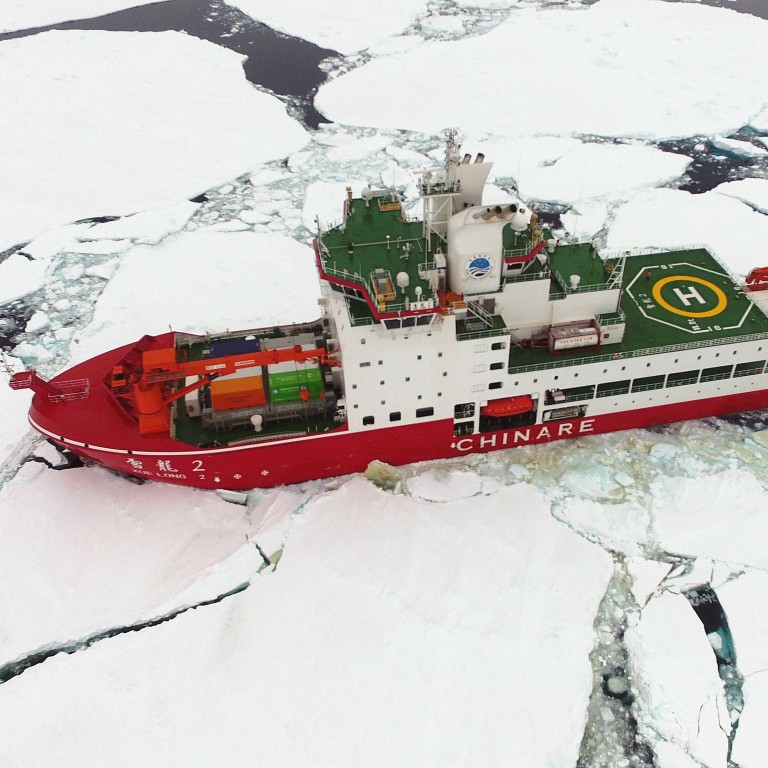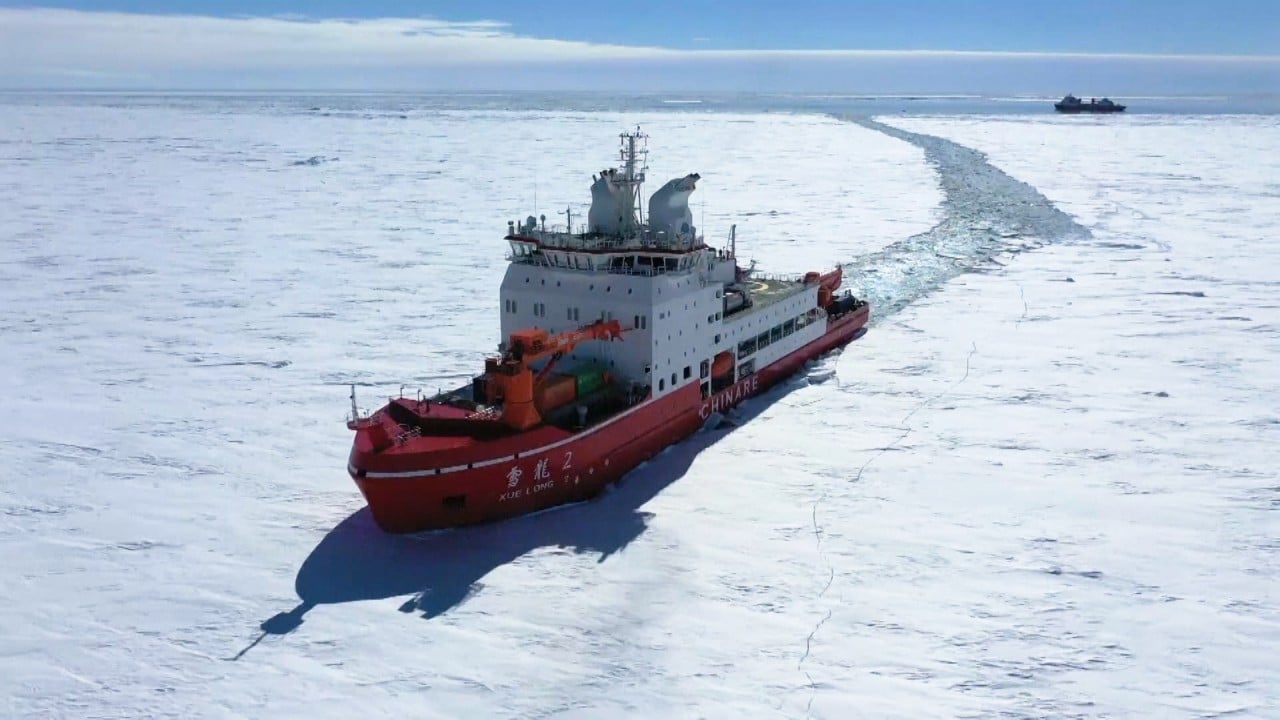
China to develop new heavy icebreaker for ‘Polar Silk Road’
- Design to be finished by 2025, ministry says, while ‘significant breakthroughs’ also expected in building huge salvage ship
- The vessels will be used to support the country’s expanding maritime activities
China plans to develop a new heavy icebreaker and semi-submersible heavy lift ships – so big that they can carry other ships – in the next five years to support its expanding maritime activities.
In addition, it said “significant breakthroughs” in construction of a semi-submersible salvage ship – a huge vessel with displacement of 100,000 tonnes – were also expected in that period.
A three-year target has been set for the design to be completed on another semi-submersible salvage ship that could be used for deep-sea lifting of up to 5,000 tonnes.
The new vessels are part of China’s latest five-year development blueprint decided earlier this year. It includes goals on deep-ocean and polar exploration, specialist vessels such as those to support deep-sea operations and the heavy icebreakers, and a plan to develop offshore floating nuclear power stations.

01:35
Chinese cargo ships sail along Arctic routes as Beijing plans ‘Polar Silk Road’

03:08
China-made polar icebreaker reaches Antarctica on maiden voyage
The United States is also expanding and modernising its polar fleet. The US Coast Guard has one heavy icebreaker in service, the Polar Star, and one medium icebreaker, the Healy. It has three new heavy icebreakers on order – the first is due to be delivered in 2024 – and three medium icebreakers.
Russia has the world’s strongest such fleet, with five nuclear-powered icebreakers in service and five more being built – it aims to use the vessels to ensure it can ship gas year-round through the Arctic. For now, it is the only country with nuclear-powered icebreakers. The most powerful, the Arktika-class, can break through 2.8 metres of ice and has a displacement of 33,000 tonnes. A new Lider-class nuclear icebreaker is slated for delivery in 2027 and is expected to be able to break up to 4 metres of ice, with displacement of 70,000 tonnes.
China’s planned semi-submersible heavy-lift ships will be used for salvage operations, including for large vessels. The latest in the fleet is the Huaruilong, which was launched last month and at 80,000 tonnes is the country’s largest of its kind. In 2017, the US Navy used one of these ships to transport a destroyer, the USS Fitzgerald, back to its home port after it collided with a cargo ship off the coast of Japan.

